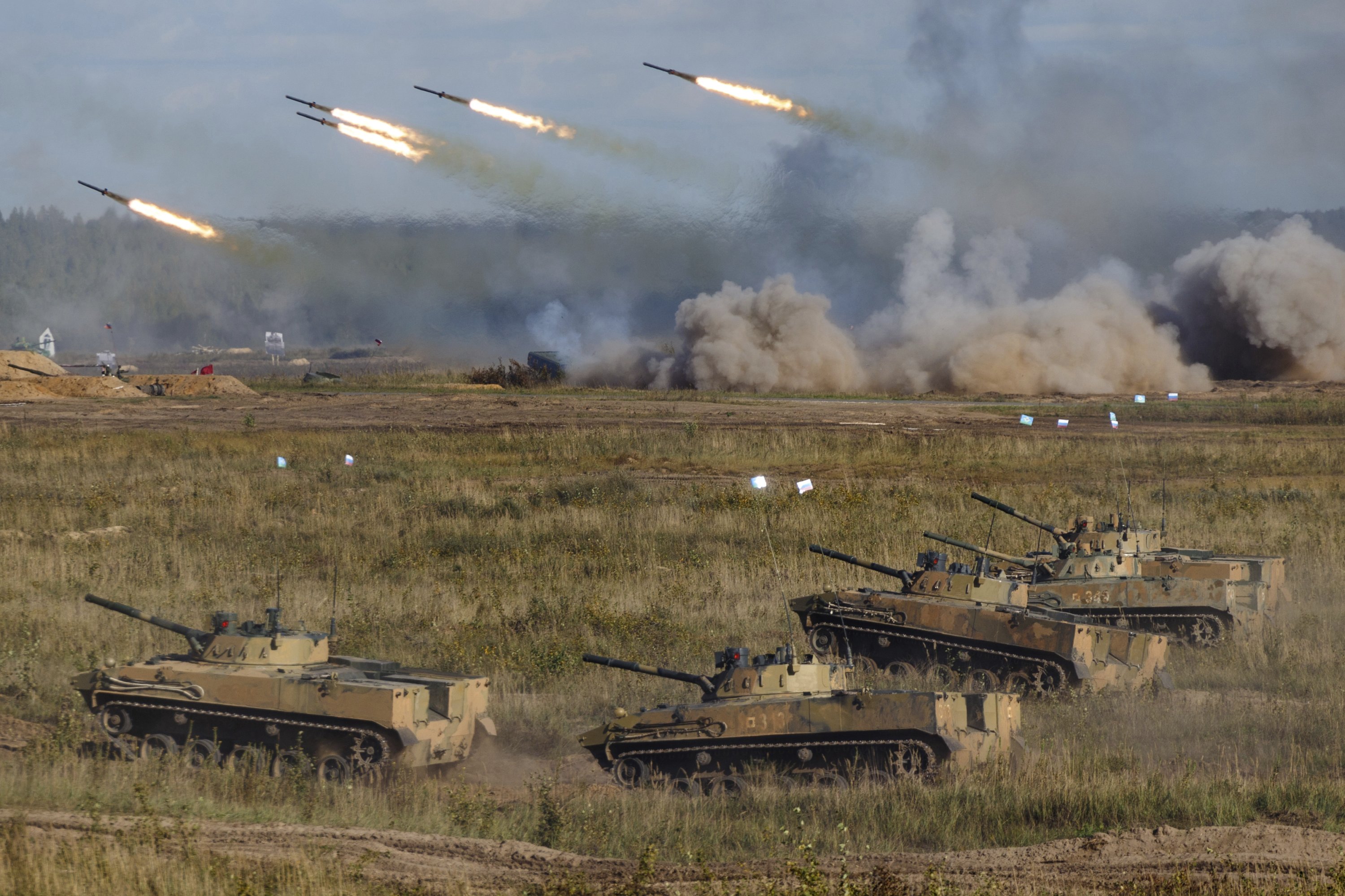
Russia has begun a catastrophic air, land, and sea war on Ukraine, a European democracy with 44 million people, and its forces are on the outskirts of Kyiv, the capital.
For months, President Vladimir Putin claimed that he would invade Ukraine, but then he ripped up a peace agreement and sent troops across the country’s north, east, and south borders.
As the death toll rises, he is accused of ruining Europe’s peace. What happens next might put the continent’s whole security system in jeopardy. On Thursday, Russian President Vladimir Putin launched a military operation in Ukraine, with explosions heard around the country and the country’s foreign minister warning of a “full-scale invasion.”
Russia has launched an attack on Ukraine, perhaps igniting a European war over Russia’s demands for a stop to NATO’s eastward expansion.
Why did Russia Invade Ukraine? The Conflict Explained in Simple Points

- While tensions between Russia and Ukraine, a former Soviet republic, have existed for some time, they began to spiral out of control in early 2021. Ukrainian President Volodymyr Zelenskyy pushed US President Joe Biden to allow Ukraine to join NATO in January of last year, that is, 2021.
- This angered Russia, which began sending soldiers near the Ukrainian border for “training exercises” in the spring of last year and increased the number in the autumn. By December, the US had started to hype the deployment of Russian troops, and Vice President Joe Biden had threatened Russia with severe sanctions if it attacked Ukraine.
- Russia has demanded a legally binding promise from the West that NATO will not conduct military operations in eastern Europe or Ukraine. Ukraine, according to Vladimir Putin, is a puppet of the West and was never a real state in the first place.
- This isn’t the first time that tensions between Russia and Ukraine have escalated. Russia invaded Ukraine in 2014 when President Putin separatists captured major areas of eastern Ukraine and have been fighting Ukraine’s army since then. Russia had annexed Crimea at the time.
- Ukraine has extensive social and cultural ties with Russia, and Russian is widely spoken there, but those ties have deteriorated since Russia invaded Ukraine in 2014.
- Russia launched an attack on Ukraine after its pro-Russian president was deposed in early 2014. More than 14,000 people have died as a result of the battle in the east.
- The Minsk peace agreement was signed by Russia and Ukraine to end the armed conflict in east Ukraine, including the Donbas region. However, as the violence continues, Russia has said that it will send “peacekeepers” to the region. Moscow is using it as a cover to occupy sovereign land, according to the West.
- The rising tension between Russia and Ukraine, which shares a border with the European Union, has ramifications for the European Union. That is why the EU has joined the US in announcing penalties against Russian entities, the majority of which are NATO signatories.
- Only a few weeks ago, French President Emmanuel Macron traveled to Moscow to meet with Russian President Vladimir Putin to de-escalate tensions.
- India has advocated for a diplomatic solution to the present Russian-Ukraine conflict.
How Far will Russia Go?
Russia is attempting to destabilize Ukraine’s democratically elected government. Its goal is to free Ukraine from persecution and “cleansed of the Nazis.”
“The enemy has designated me as target number one; my family is target number two,” President Zelensky added.
This false narrative of a fascist-controlled Ukraine has been repeated on Kremlin-controlled television regularly. Mr. Putin has stated that “those who committed numerous bloody crimes against civilians” will be prosecuted.
Russia’s intentions for Ukraine are unknown, but it will confront significant opposition from a hostile population.
The UK accused Moscow in January of trying to place a pro-Moscow puppet in charge of Ukraine’s government, which Russia dismissed as nonsense at the time. According to one unconfirmed intelligence report, Russia was planning to split the country in half.
When up to 200,000 troops were stationed near Ukraine’s borders in the days leading up to the invasion, Russia’s public attention was only on the eastern provinces of Luhansk and Donetsk.
Mr. Putin signaled to the world that the rebel areas controlled by Russian agents were no longer part of Ukraine by declaring them independent. Then he admitted that he agreed with their claims too far more Ukrainian territory. The self-proclaimed people’s republics only cover about a third of Ukraine’s Luhansk and Donetsk regions, but the rebels covet the rest, too.